Video by Lina Grube
Orca trips are led by Juan Copello with support from the PNOR team. Juan grew up with the orca at Punta Norte and has unparalleled knowledge and instincts with this group of orca. The strategies and techniques to best view the orca and the predatory events have been honed over decades of experience and will give you the best chance to see these spectacular predations.
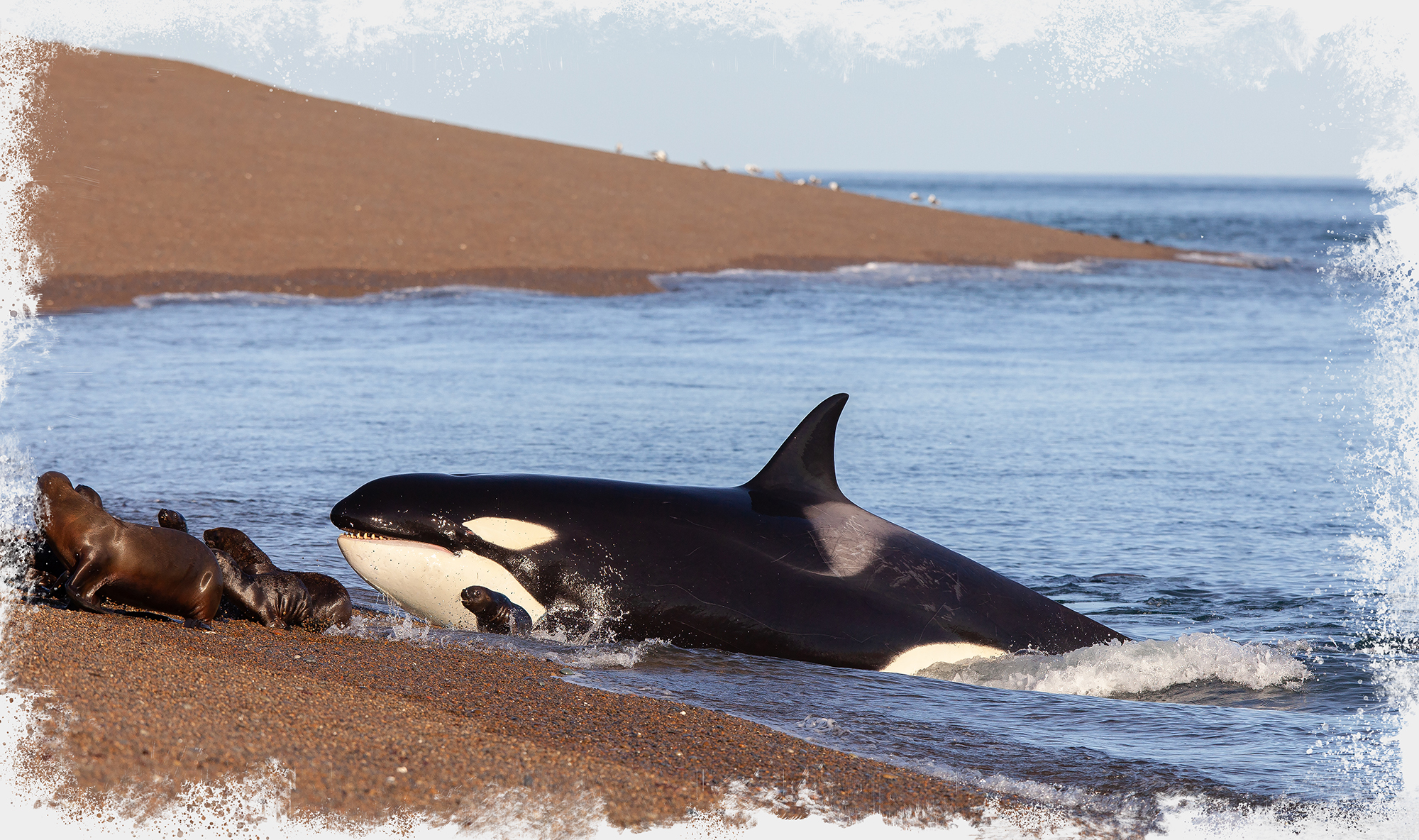
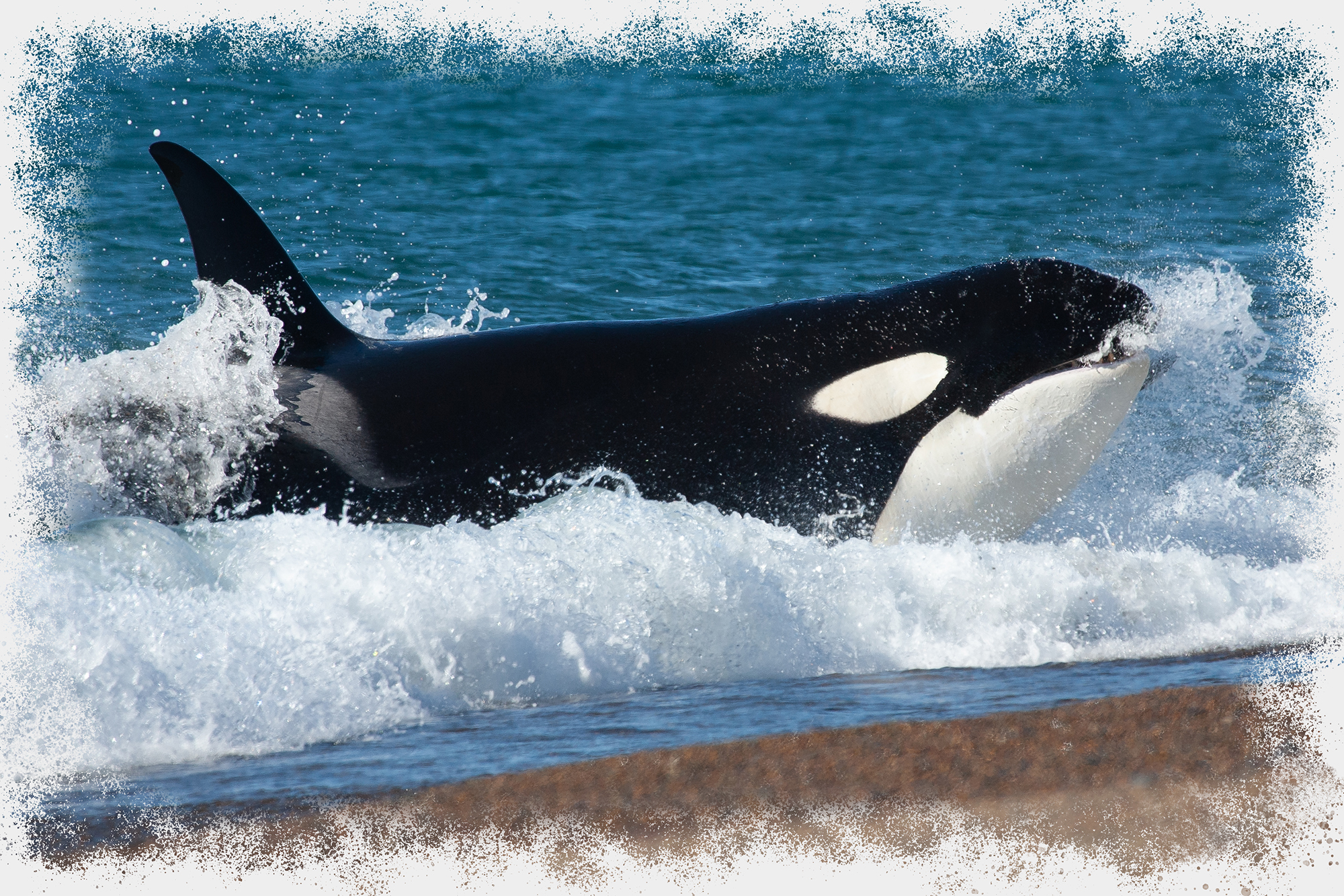
Each day during the orca season, we arrive at the beach before sunrise. The beaches are chosen by the location and of the sea lion colonies, weather and the tide schedule. Lunch and snacks are carried in personal coolers by each person or couple. Our team will spend the day watching out carefully for the orca. The orca are not tagged and we typically have no information regarding their whereabouts. Arrival of the orca is typically sudden and requires quick response as the attacks normally happen very quickly once the orca appear. As a result, all guests are advised to remain ready and near the group at all times. Days are long and more than half of the days, the orca are not seen. We remain in the field until late in the afternoon when opportunities for arrival of the orca diminish, the orca depart or the sun goes down.
Weather is highly variable both during the day and from one day to the next. It is best to dress in layers as the morning is often cold but temperature rise considerably during the day. Water proof pants are advisable as well as water resistant footwear. Rain is very uncommon but the pebble beaches are wet, especially in the mornings with falling tides. Muted colours are also strongly recommended in order to blend in with the environment and not disturb the wildlife.
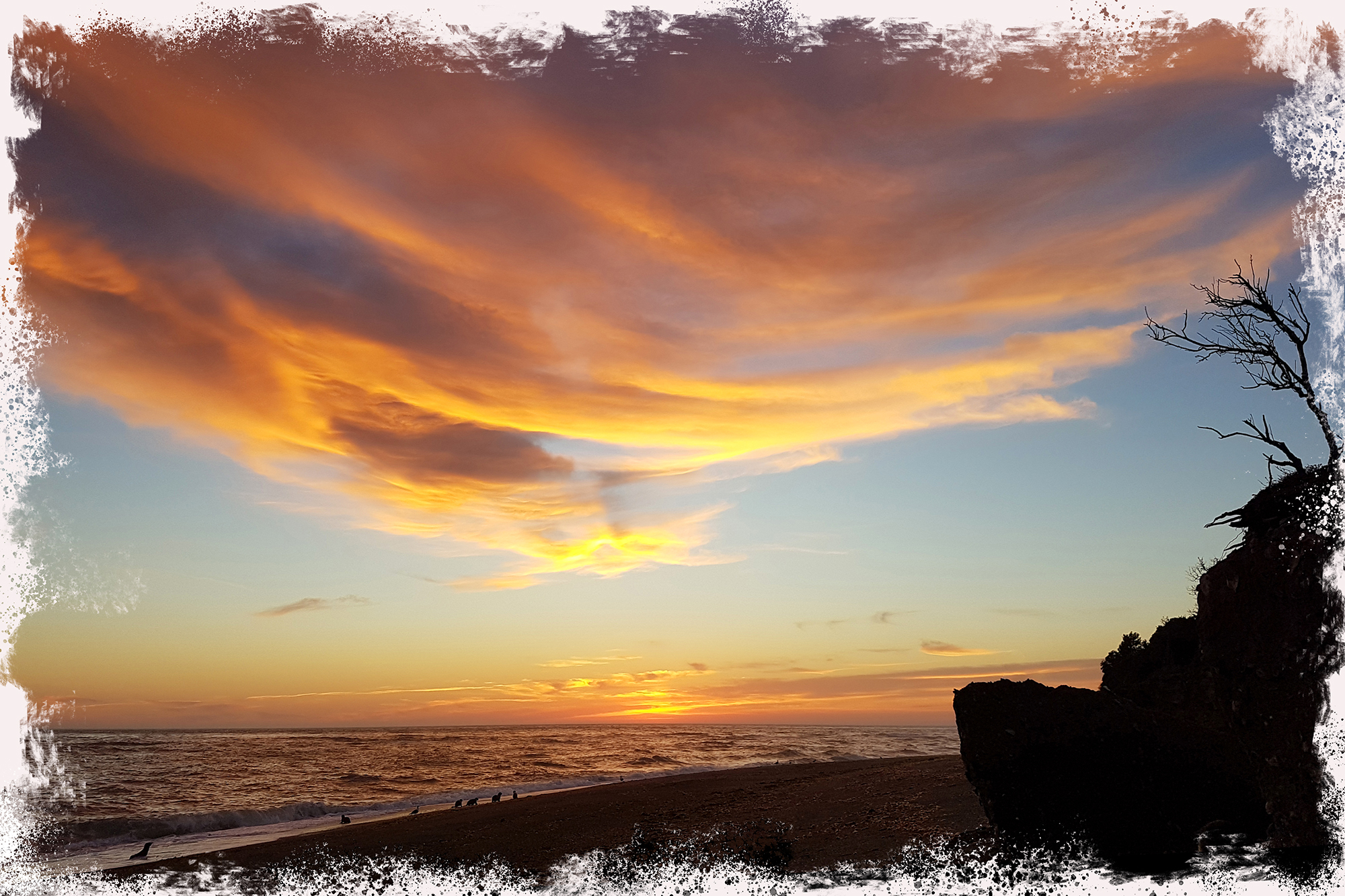
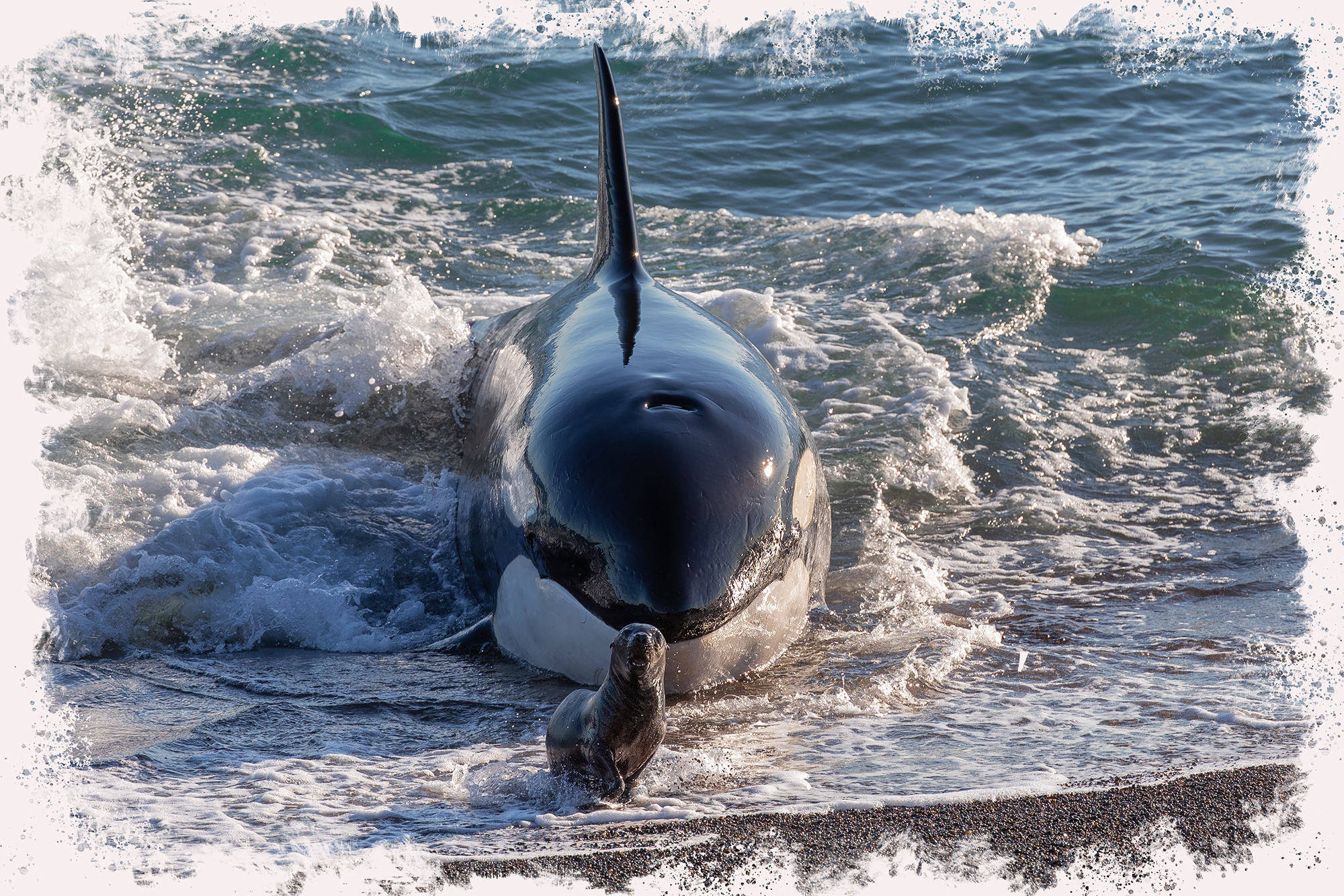
We maintain a respectful distance from the animals. As a result, a lens between 300-400 mm is ideal. On occasion, a teleconvertor allowing up to 600 mm can be useful. However, 500 or 600 mm lenses are generally not recommended as they tend to be too tight on the action resulting in compositional errors and missed shots. We recommend a monopod and discourage tripods as we often need to shot in close quarters with other guests and tripod legs can be problematic. Wide angle lenses can also be an asset to capture landscape and beautiful sunrises.
In The Field
At The Faro
The faro (lighthouse) gives us an elevated vantage point from which to maintain a lookout for approaching orca
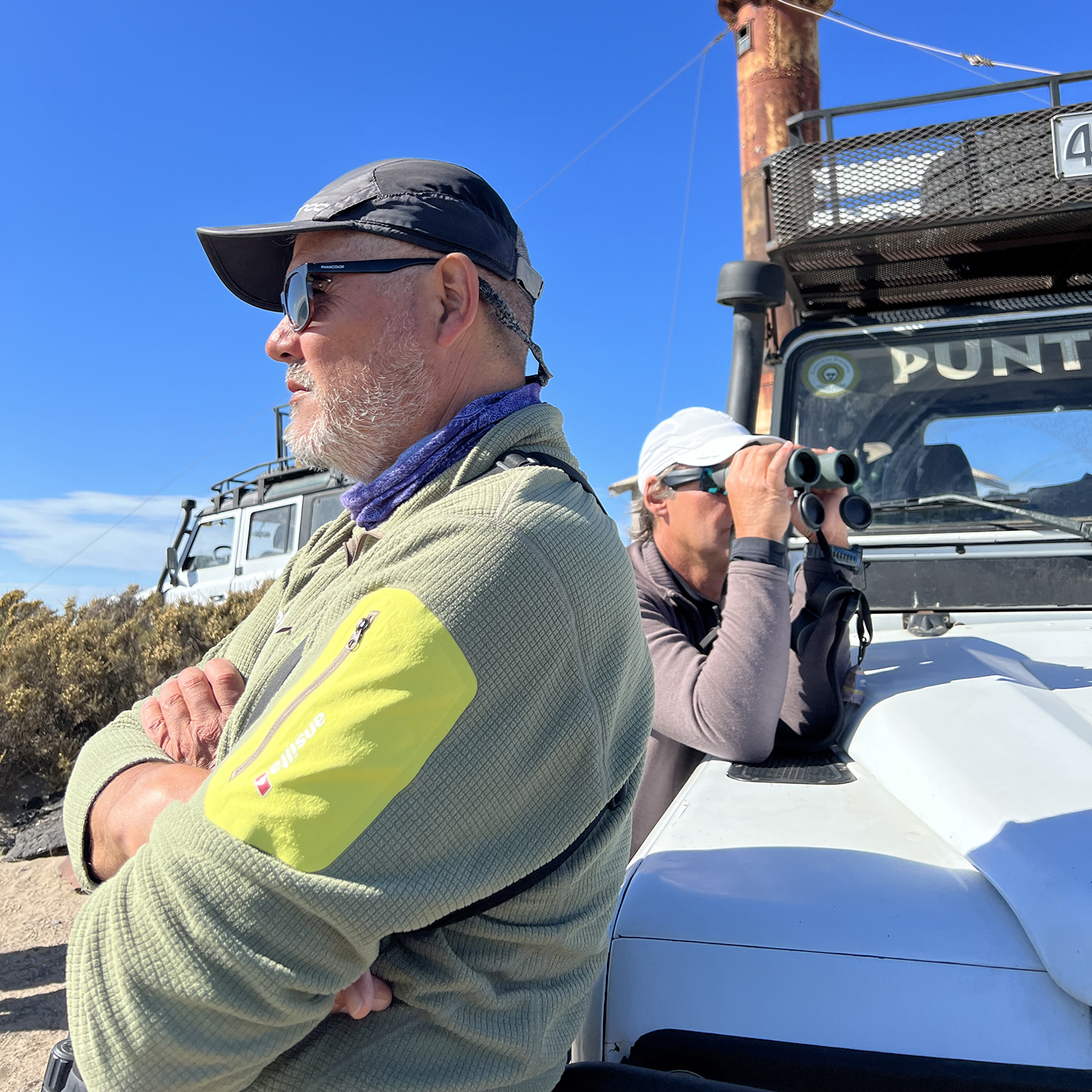
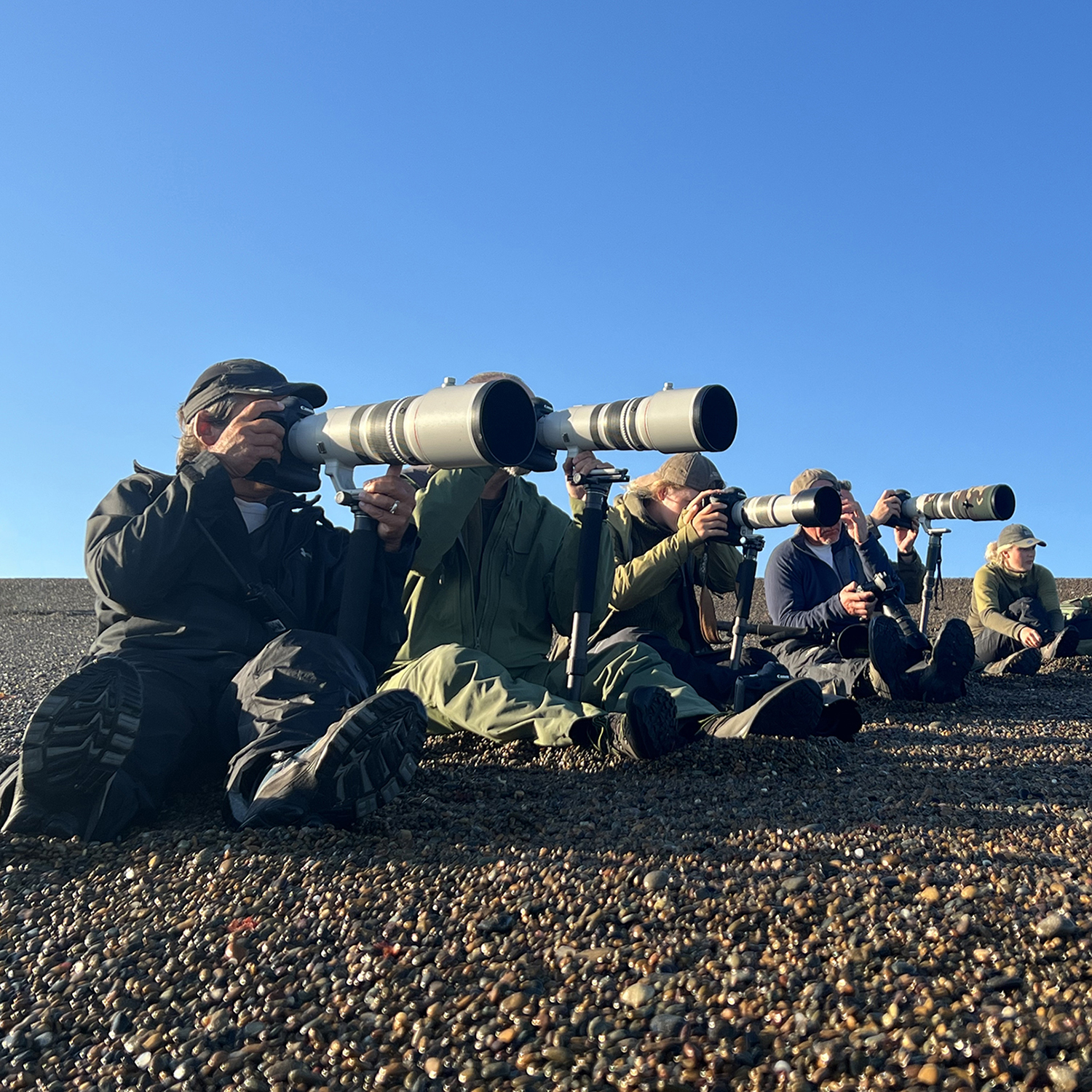
On The Beach
During ideal tides, the group will spend time at the beach waiting. We maintain a quiet and respectful presence near the sea lions. This allows us to be ready for the sudden arrival of orca.
Our accommodations are at the estancia, a working sheep farm, where there are eight rooms available for guests. The rooms are configured as twin shares or double beds. If you wish to add another bed to the room that typically can be arranged. Each room has an ensuite with a shower (hot and cold running water), hand basin and toilet. Each room also has a gas heater. The estancia has both solar power and a generator to ensure the presence of electricity 24 hours a day. Wi-fi is provided by satellite but is limited due to the remote location. Breakfast and dinner are provided each day in the dining room. A traditional asado is also held once a week. All food is prepared onsite by our talented chefs. Please inform us in advance is there are any dietary considerations.
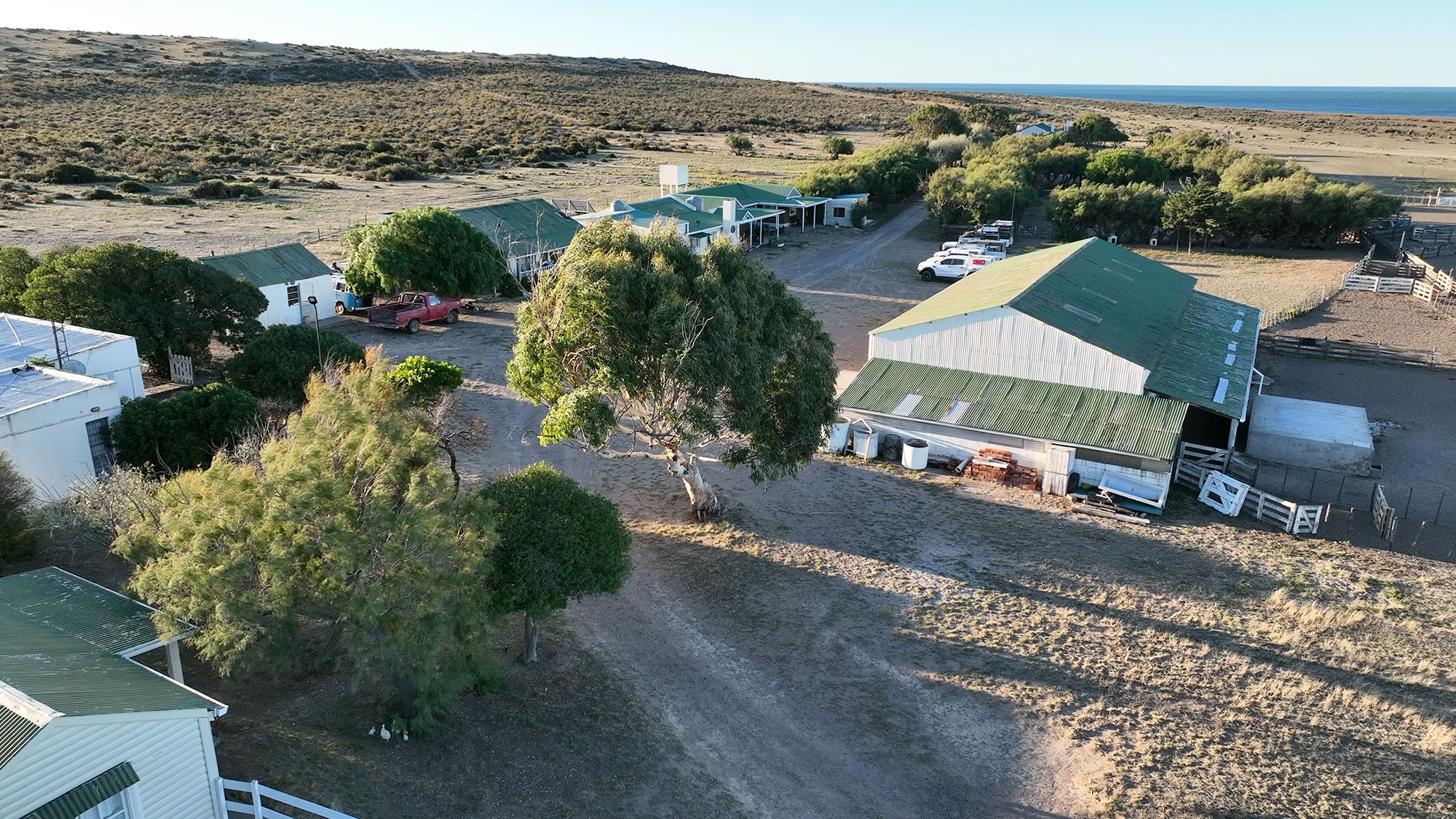

Arrival to the area is usually by the airports in either Trelew or Puerto Madryn. Trelew is 240 km and Puerto Madryn is 170 km from the estancia. Transfer to and from the airport or your accomodations in Trelew or Puerto Madryn can be arranged in advance. If you wish to drive to the estancia yourself, please be aware that the road from the main highway to Punta Norte is poorly maintained and can be treacherous. There is adequate parking at the estancia if you arrive in your own vehicle. All driving during the trip is in our Land Rovers.
The estancia is open for the orca season between March and early May. The reason for this seasonality is the timing of when the recently born sea lion pups are entering the water and learning to swim. Adult male sea lions arrive to the beaches in December, followed by adult females. The pups are soon born and begin to mature. By the beginning of March, the young pups are entering the sea in front of the colonies and developing their swimming skills. While the orca visit Punta Norte throughout the year, they visit more frequently during these months when the sea lion pups have started swimming but remain vulnerable and naive. Many people wonder about the best time of the season to see the orca. The truth is that there is no one best time. In general the orca are present more frequently in April but there can be long periods where the orca are absent at any time of the season and great days are possible at any time. In short, there are no guarantees. As top predators, the orca maximize their hunting success by being unpredictable. The following shows when we have seen the orca over the last 11 years.
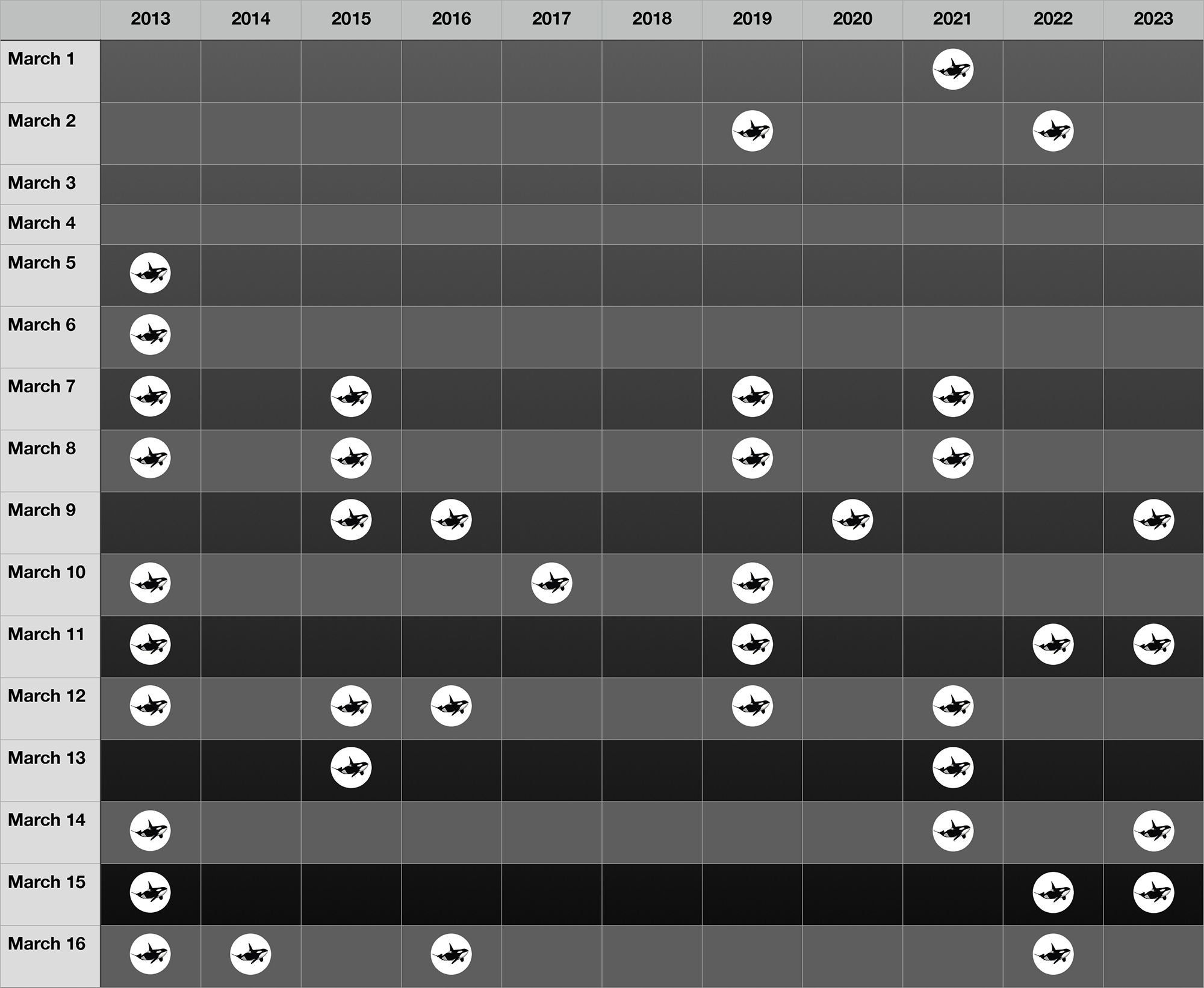
Early March
Sea lion pups are young and naive. Weather is normally calmer. Attack behaviour is concentrated at low tide when pups can handle the waves. Orca appear less frequently in early season, but if they come, the attacks are often spectacular.
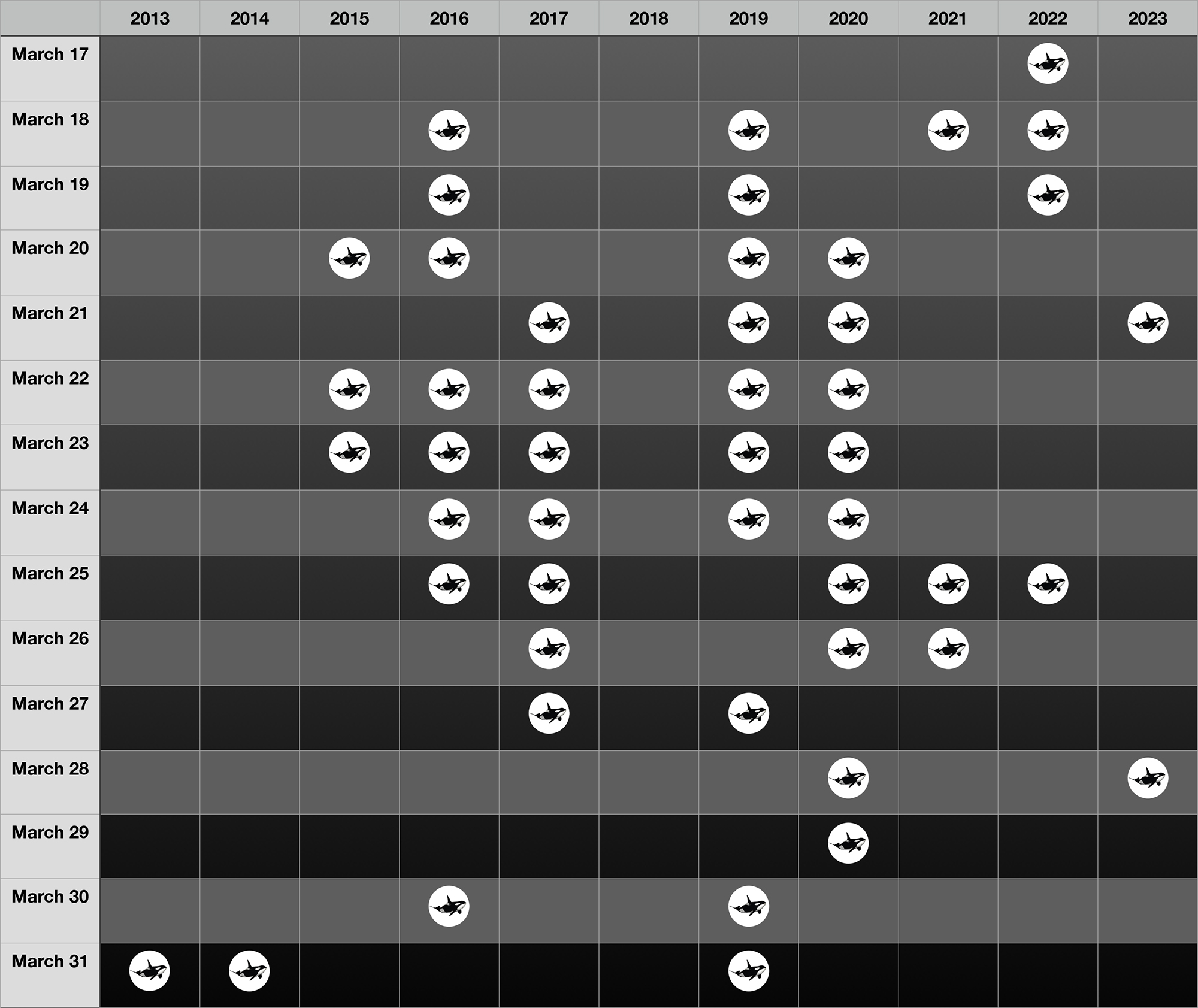
Late March
The sea lion pups are growing and can handle rougher water. Attacks begin to focus on rising tides and greater opportunities at high tide. The frequency of orca appearance begins to climb. Weather remains calmer as the summer wanes.
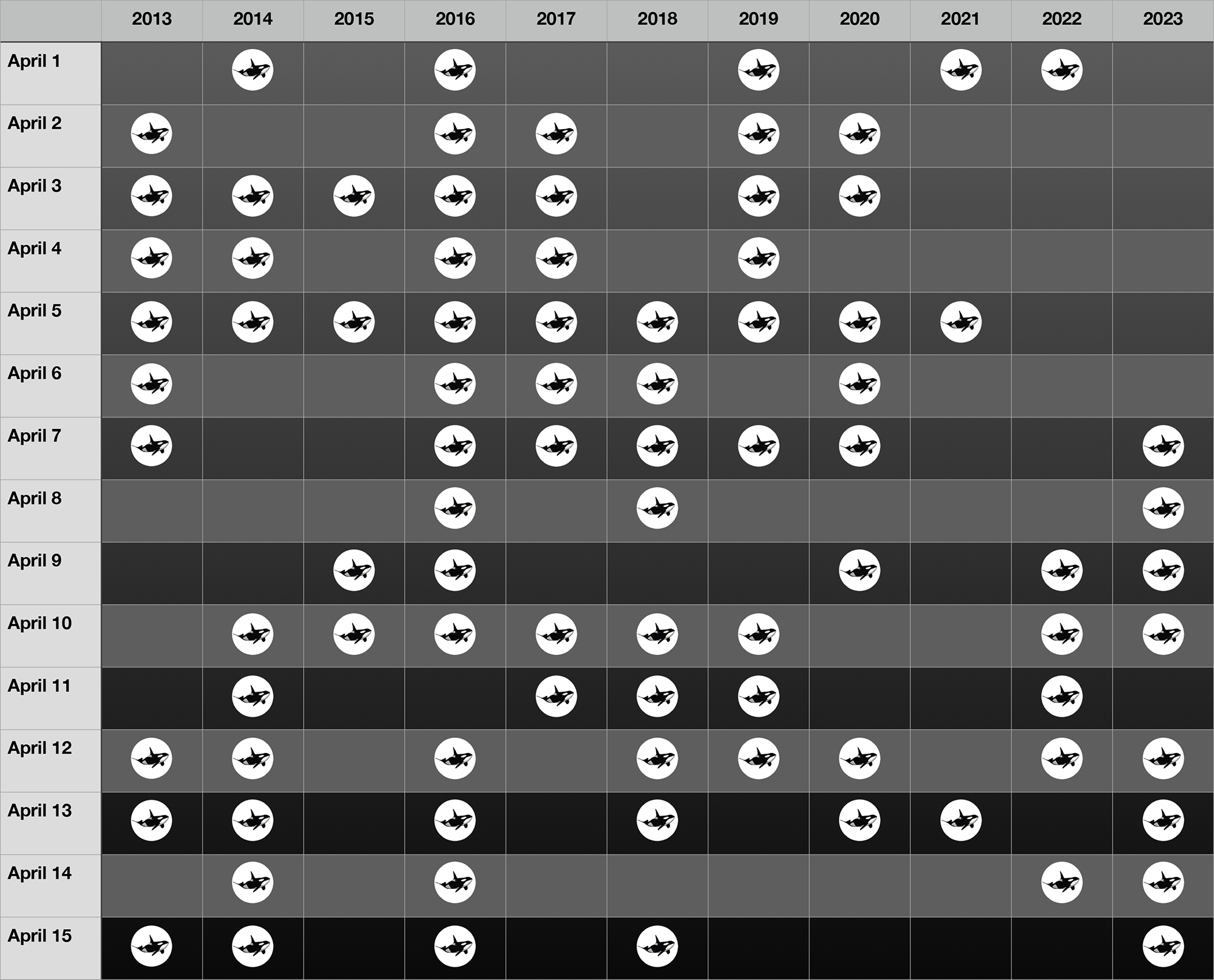
Early April
The pups are now larger, and stronger. Attacks are concentrated around the high tide. Orca frequency at Punta Norte continues to rise in early April. Weather is often more unpredictable with arrival of southern autumn.
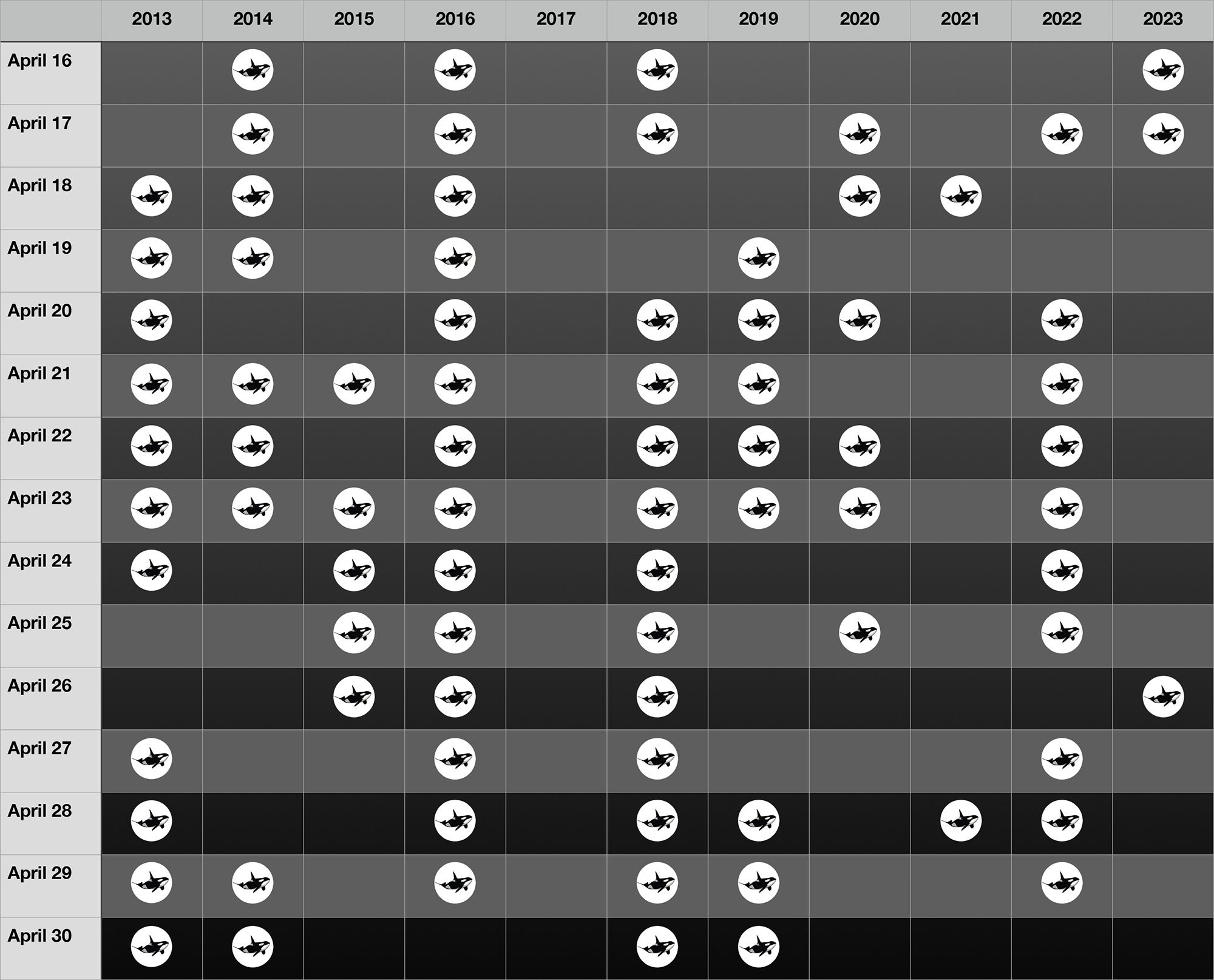
Late April - Early May
Pups are more mature and travel further, spreading out the attacks. Weather is more variable and cooler. The orca are frequently present. The pups are older and wiser. The orca need to be more clever in their attacks.
For any questions about our orca trips including available dates, please contact as by email at info@laernestina.com or complete the form at the following link. Please remember that a minimum stay of 5 nights is required for our trips.


